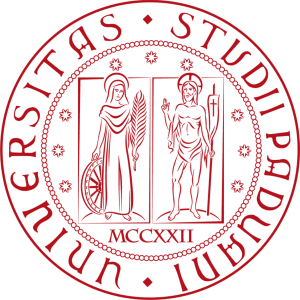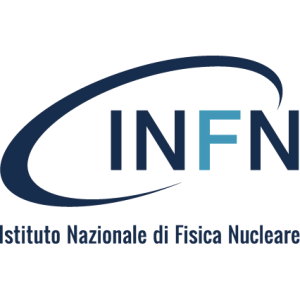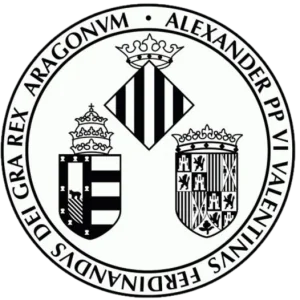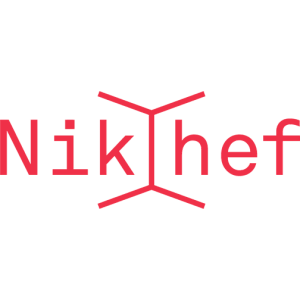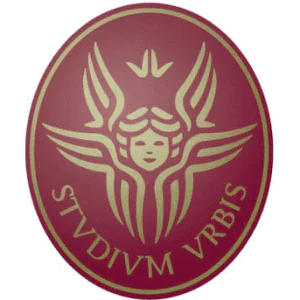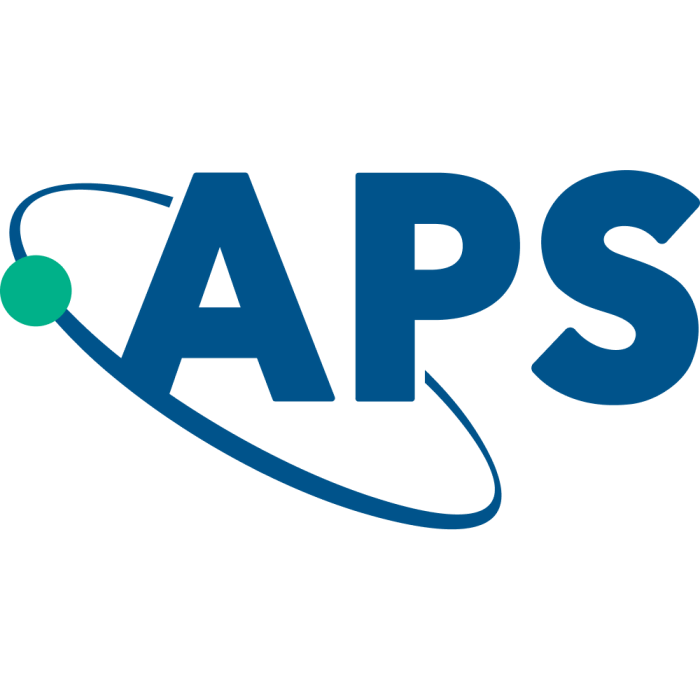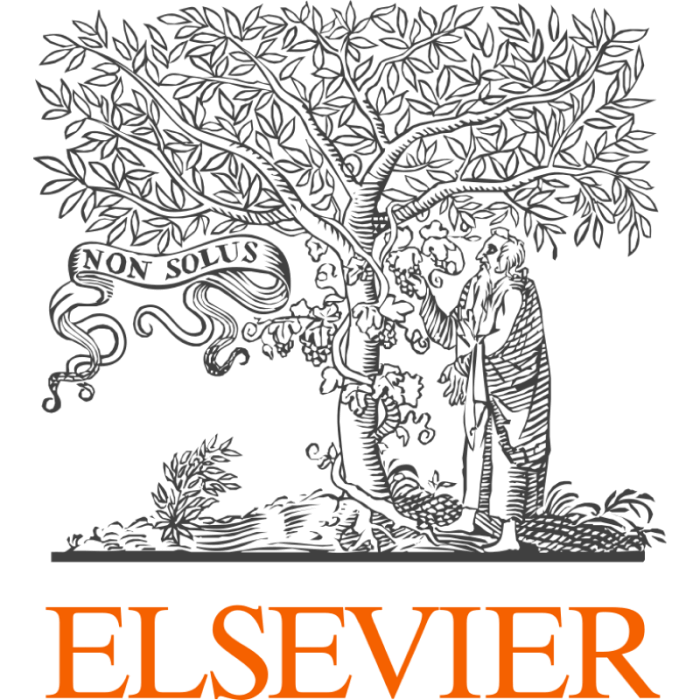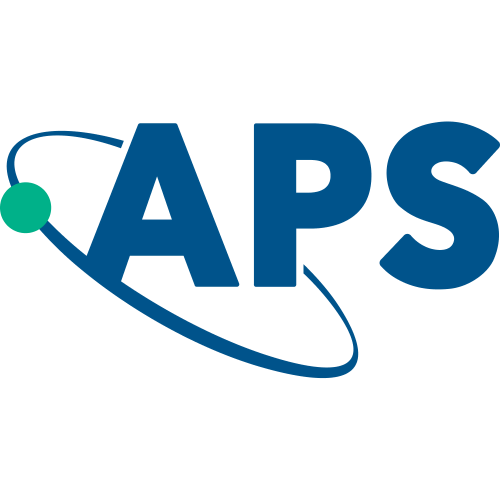Open Access


Journal of High Energy Physics, volume 2022, issue 7, publication number 117
Study of coherent J/ψ production in lead-lead collisions at $$ \sqrt{{\mathrm{s}}_{\mathrm{NN}}} $$ = 5 TeV
R. Aaij
1
,
C. Abellan Beteta
2
,
T. Ackernley
3
,
B. Adeva
4
,
M. Adinolfi
5
,
H. Afsharnia
6
,
C. A. Aidala
7
,
S. Aiola
5
,
Z. Ajaltouni
8
,
S. Akar
9
,
J Albrecht
10
,
F. Alessio
11
,
M ALEXANDER
12
,
A. Alfonso Albero
13
,
Z. Aliouche
14
,
G. Alkhazov
15
,
P. Alvarez Cartelle
16
,
S Amato
17
,
Y. Amhis
10
,
L. An
18
,
L. Anderlini
14
,
A. Andreianov
19
,
M. Andreotti
20
,
F. ARCHILLI
21
,
A. Artamonov
22
,
M. Artuso
23
,
K. Arzymatov
24
,
E Aslanides
1
,
M Atzeni
25
,
B. Audurier
20
,
S Bachmann
26
,
M. Bachmayer
27
,
J.J. Back
3
,
P. Baladron Rodriguez
25
,
V. Balagura
19
,
W. Baldini
28
,
J. Baptista Leite
13
,
R. J. BARLOW
17
,
S. Barsuk
29
,
W. Barter
30
,
M. Bartolini
31
,
F. Baryshnikov
32
,
J. M. Basels
33
,
G. Bassi
22
,
B. Batsukh
9
,
A. Battig
26
,
A. Bay
9
,
M Becker
33
,
F. Bedeschi
28
,
I. BEDIAGA
22
,
A. Beiter
23
,
V. Belavin
34
,
S Belin
26
,
V. Bellee
21
,
K. Belous
35
,
I. Belov
36
,
I. Belyaev
37
,
G. BENCIVENNI
38
,
E. Ben-Haim
35
,
A. Berezhnoy
1
,
R. Bernet
20
,
D. Berninghoff
22
,
H. C. Bernstein
10
,
C. Bertella
39
,
A. Bertolin
1
,
C. BETANCOURT
10
,
F. Betti
1
,
Ia. Bezshyiko
4
,
S Bhasin
40
,
J. Bhom
41
,
L. Bian
9
,
M. S. Bieker
42
,
S. Bifani
38
,
P. Billoir
29
,
M. Birch
15
,
F. C. R. Bishop
13
,
A. Bitadze
18, 43
,
A. Bizzeti
44
,
M. Bjørn
10
,
M. P. Blago
27
,
T. Blake
26
,
F. Blanc
22
,
S. Blusk
11
,
D. Bobulska
9
,
J. A. Boelhauve
3
,
O Boente Garcia
8
,
T. Boettcher
45
,
A. Boldyrev
46
,
A. Bondar
10, 14
,
N. Bondar
13
,
S. Borghi
23
,
M. Borisyak
20
,
M. Borsato
40
,
J. T. Borsuk
26
,
S. A. Bouchiba
2
,
T.J.V. Bowcock
10
,
A. Boyer
19
,
C Bozzi
29
,
M.J. Bradley
47
,
S Braun
3
,
A. Brea Rodriguez
10
,
M. Brodski
40
,
J. Brodzicka
27
,
A. Brossa Gonzalo
34
,
D. Brundu
1
,
A. Buonaura
10
,
C. Burr
48
,
A. Bursche
49
,
A. BUTKEVICH
50
,
J. S. Butter
10
,
J BUYTAERT
10
,
W. Byczynski
34
,
S Cadeddu
41
,
H. Cai
19, 51
,
R. Calabrese
9, 38
,
L. Calefice
37
,
L. Calero Diaz
37
,
S. Cali
42
,
R. Calladine
52, 53
,
M. Calvi
54
,
M. Calvo Gomez
4
,
P. Camargo Magalhaes
12, 54
,
A Camboni
37
,
P. Campana
55
,
A. F. Campoverde Quezada
52, 53
,
S. Capelli
56, 57
,
L. Capriotti
56, 57
,
Andreina Carbone
58
,
G. Carboni
30
,
R Cardinale
34
,
A. Cardini
59
,
I. Carli
52, 53
,
P. Carniti
32
,
L. Carus
50
,
K. Carvalho Akiba
3
,
A. Casais Vidal
2
,
G Casse
10
,
M. Cattaneo
10
,
G. Cavallero
26
,
S. Celani
24
,
J. Cerasoli
2
,
A J CHADWICK
4
,
M. G. Chapman
38
,
M. Charles
10
,
Ph. Charpentier
42
,
G. Chatzikonstantinidis
2
,
C. A. Chavez Barajas
60
,
M. Chefdeville
61
,
C. Chen
59
,
S. Chen
40
,
A. Chernov
3
,
V. Chobanova
26
,
S. Cholak
40
,
M. Chrzaszcz
14
,
A. Chubykin
14
,
V. Chulikov
37
,
P. CIAMBRONE
27
,
M. F. Cicala
3
,
X. Cid Vidal
10
,
G. Ciezarek
62
,
P. E. L. CLARKE
10
,
M. Clemencic
15
,
H V Cliff
10
,
J. Closier
13
,
J. L. Cobbledick
10
,
V. Coco
17
,
J. A. B. Coelho
24
,
J Cogan
5
,
E. Cogneras
63
,
L. Cojocariu
10
,
P. Collins
10
,
T Colombo
64, 65
,
L. Congedo
34
,
A Contu
42
,
N COOKE
11
,
G. Coombs
10
,
G. Corti
27
,
C. M. Costa Sobral
10
,
B. Couturier
66
,
D. C. Craik
67
,
J. Crkovská
28
,
M. Cruz Torres
62
,
R Currie
67
,
C. L. Da Silva
9
,
E. Dall’Occo
3
,
J. Dalseno
10
,
C. d'Ambrosio
36
,
A. Danilina
10
,
P. Dargent
13
,
A. Davis
13
,
O. De Aguiar Francisco
68
,
K. de Bruyn
13
,
S. de Capua
26
,
M. De Cian
28
,
J. M. DE MIRANDA
16
,
L. de Paula
64, 65
,
M. De Serio
1
,
D. De Simone
37
,
P. De Simone
69
,
J. A. DE VRIES
67
,
C. T. Dean
60
,
D. Decamp
38
,
L. Del Buono
15
,
B. Delaney
9
,
H.P. Dembinski
70
,
A. Dendek
1
,
V. Denysenko
45
,
D Derkach
5
,
O. Deschamps
17
,
F. Desse
34, 71
,
F. Dettori
72
,
B. DEY
37
,
P. Di Nezza
31
,
S. Didenko
3
,
L. Dieste Maronas
10
,
H. Dijkstra
73
,
V. Dobishuk
74
,
A. M. Donohoe
34
,
F. Dordei
28
,
A.C. dos Reis
11
,
L. DOUGLAS
75
,
A. Dovbnya
60
,
A. G. Downes
2
,
K. Dreimanis
40
,
M. W. Dudek
10
,
L. Dufour
76
,
V. Duk
10
,
P. Durante
67
,
J. M. Durham
13
,
D. Dutta
40
,
A. Dziurda
14
,
A. Dzyuba
77
,
S Easo
78
,
U Egede
36
,
V. Egorychev
46, 79
,
S Eidelman
62
,
S. EISENHARDT
26
,
S. Ek-In
11, 80
,
L. Eklund
22
,
S. Ely
63
,
A. Ene
67
,
E. Epple
32
,
S. Escher
1
,
J. Eschle
38
,
S Esen
10
,
T. Evans
56
,
A. Falabella
61
,
J. Fan
55
,
Y. Fan
41
,
B. Fang
2
,
S. Farry
52, 53
,
D. Fazzini
10
,
M. Féo
3
,
A. Fernandez Prieto
12
,
J. M. Fernandez-tenllado Arribas
47
,
A. D. Fernez
56, 57
,
F. FERRARI
26
,
L. Ferreira Lopes
16
,
F. Ferreira Rodrigues
50
,
S. Ferreres Sole
1
,
M. Ferrillo
10
,
M. Ferro-Luzzi
49
,
S. Filippov
64
,
R.A Fini
19, 51
,
M. Fiorini
70
,
M. Firlej
44
,
K. M. Fischer
6
,
D. S. Fitzgerald
13
,
C. Fitzpatrick
70
,
T. Fiutowski
25
,
F. Fleuret
38
,
M Fontana
30, 81
,
F. Fontanelli
10
,
R. Forty
2
,
V. Franco Lima
47
,
M. Franco Sevilla
10
,
M Frank
19
,
E. Franzoso
20
,
G. Frau
10
,
C FREI
11
,
D. A. Friday
7
,
J Fu
9
,
Q. Fuehring
10
,
W. Funk
50
,
E Gabriel
23
,
T. Gaintseva
3
,
A. Gallas Torreira
56, 57
,
D. Galli
10, 62
,
S. Gambetta
61
,
Y. Gan
16
,
M. Gandelman
7
,
P. Gandini
82
,
Y. Gao
34
,
M. Garau
27
,
L. M. Garcia Martin
12
,
P. Garcia Moreno
52, 53
,
J. García Pardiñas
3
,
B. Garcia Plana
25
,
F. A. Garcia Rosales
12
,
L Garrido
10
,
C. Gaspar
50
,
R. E. Geertsema
20
,
D. Gerick
9
,
L. L. Gerken
13
,
E. Gersabeck
13
,
M. Gersabeck
27
,
T. Gershon
24
,
D. Gerstel
60
,
Ph. Ghez
15
,
V. Gibson
83
,
H. K. Giemza
37, 84
,
M Giovannetti
3
,
A. Gioventù
12
,
P. Gironella Gironell
63
,
L. Giubega
10, 19, 51
,
C. Giugliano
62
,
K. Gizdov
10
,
E. L. Gkougkousis
38
,
V. V. Gligorov
85
,
C Göbel
54
,
E. GOLOBARDES
36
,
D. Golubkov
29, 31
,
A. Golutvin
28, 86
,
A Gomes
12
,
S. Gomez Fernandez
44
,
F. Goncalves Abrantes
40
,
M. Goncerz
61
,
G. Gong
36
,
P. Gorbounov
35
,
I. V. Gorelov
52
,
C. GOTTI
10
,
E. Govorkova
20
,
J. P. Grabowski
38
,
T. Grammatico
10
,
L. A. Granado Cardoso
12
,
E. Graugès
26
,
E. Graverini
18
,
G GRAZIANI
63
,
A. Grecu
50
,
L. M. Greeven
19, 51
,
P GRIFFITH
13
,
L. Grillo
31
,
S. Gromov
44
,
B. R. Gruberg Cazon
61
,
C. Gu
19
,
M. Guarise
20
,
P. A. Günther
49
,
E. Gushchin
32
,
A. Güth
21
,
Y. Guz
10
,
T. Gys
78
,
T. Hadavizadeh
26
,
G HAEFELI
10
,
C. Haen
10
,
J. Haimberger
2
,
T. Halewood-leagas
47
,
P M Hamilton
2
,
J. P. Hammerich
87
,
Q. Han
20
,
X. Han
44
,
T. H. Hancock
20
,
S. Hansmann-Menzemer
44
,
N. Harnew
2
,
T. Harrison
10
,
C. Hasse
10
,
M. Hatch
55, 88
,
J. He
29
,
M Hecker
50
,
K. Heijhoff
9
,
K. Heinicke
10
,
A. M. Hennequin
2
,
K. Hennessy
7, 89
,
L Henry
32
,
J. Heuel
16
,
A. Hicheur
26
,
D. Hill
13
,
M. Hilton
9
,
S. E. Hollitt
20
,
J. Hu
87
,
W. Hu
55
,
W. Huang
41
,
X. Huang
50
,
W. Hulsbergen
27
,
R. J. HUNTER
45
,
M. Hushchyn
2
,
D. Hutchcroft
50
,
D. Hynds
9
,
P. Ibis
70
,
M. Idzik
14
,
D. Ilin
8
,
P. Ilten
14
,
A. Inglessi
31
,
A. Ishteev
14
,
K. Ivshin
10
,
R. Jacobsson
10
,
S. Jakobsen
50
,
E. Jans
89
,
B. K. Jashal
47
,
A. JAWAHERY
9
,
V. Jevtic
40
,
M. Jezabek
61
,
F. Jiang
44
,
M. John
10
,
D JOHNSON
15
,
C R JONES
27
,
T P Jones
10
,
B Jost
10
,
N. Jurik
75
,
S. Kandybei
61
,
Y. Kang
10
,
M. Karacson
45
,
M. Karpov
10
,
F. Keizer
27
,
M. Kenzie
90
,
T. Ketel
9
,
B. Khanji
91
,
A. Kharisova
21
,
S. Kholodenko
32
,
T. Kirn
26
,
V. S. Kirsebom
66
,
O. Kitouni
50
,
S. Klaver
83
,
K. Klimaszewski
73
,
S. Koliiev
31
,
A. Kondybayeva
36
,
A. Konoplyannikov
70
,
P. Kopciewicz
20
,
R. Kopecna
50
,
P. Koppenburg
35
,
M. Korolev
50, 73
,
I. Kostiuk
73
,
O. Kot
14, 19
,
S. Kotriakhova
14
,
P. Kravchenko
49
,
L. Kravchuk
10
,
R. D. Krawczyk
27
,
M. Kreps
29
,
F. Kress
32
,
S. Kretzschmar
46, 79
,
P. Krokovny
70
,
W. Krupa
83
,
W. Krzemien
40, 92
,
W. Kucewicz
40
,
M. Kucharczyk
46, 79
,
V. Kudryavtsev
50, 90
,
H. S. Kuindersma
67
,
G. J. Kunde
36
,
T. Kvaratskheliya
10
,
D. Lacarrere
13
,
G. Lafferty
34
,
A. Lai
34
,
A. Lampis
1
,
D. Lancierini
13
,
J. J. Lane
4
,
R LANE
37
,
G. Lanfranchi
32
,
C. Langenbruch
9
,
J. Langer
1
,
O. Lantwin
27
,
LATHAM T.
33, 93
,
F Lazzari
24
,
R. Le Gac
6
,
S. H. Lee
5
,
R. LEFÈVRE
35
,
A. Leflat
31
,
S. Legotin
24
,
O. Leroy
40
,
T. Lesiak
20
,
B. Leverington
48
,
H Li
44
,
L Li
20
,
P. Li
87
,
S. Li
59
,
Y Li
22
,
Z Li
22
,
X. Liang
29
,
T. Lin
10
,
R Lindner
9
,
V. Lisovskyi
34
,
R. Litvinov
48
,
G. Liu
55
,
H Liu
59
,
S. Liu
61
,
Xin Liu
34
,
A. Loi
3
,
J. Lomba Castro
11
,
I. Longstaff
16
,
J.H. Lopes
15
,
G.H. Lovell
48
,
Q. Lu
59
,
Y Lü
39, 94
,
D. Lucchesi
49
,
S. Luchuk
50
,
M. Lucio Martinez
50, 73
,
V. Lukashenko
61
,
Y. Luo
13
,
A. Lupato
19, 51
,
E Luppi
27
,
O. Lupton
33, 95
,
A Lusiani
55
,
X. Lyu
59
,
L. Ma
55
,
R MA
56, 57
,
S. Maccolini
17
,
F. Machefert
63
,
F. Maciuc
26
,
V. Macko
9
,
P. Mackowiak
4
,
S. Maddrell-Mander
70
,
O. Madejczyk
4
,
L. R. Madhan Mohan
14
,
O. Maev
45
,
A. Maevskiy
14
,
D. Maisuzenko
70
,
M. W. Majewski
40
,
J. J. Malczewski
44
,
S. Malde
10
,
B. Malecki
96
,
A. Malinin
46, 79
,
T. Maltsev
20
,
H. Malygina
34, 71
,
G. Manca
24
,
G. MANCINELLI
56, 57
,
D. Manuzzi
7, 97
,
D. Marangotto
5, 98
,
J. Maratas
60
,
J. F. Marchand
56
,
U. Marconi
18, 99
,
S. MARIANI
10
,
C. Marin Benito
26
,
M. Marinangeli
20
,
J. Marks
4
,
A.M. MARSHALL
2
,
P.J. Marshall
100
,
G. Martellotti
10, 53
,
L. Martinazzoli
52, 53
,
M Martinelli
3
,
D. Martinez Santos
89
,
F. Martinez-Vidal
28
,
A. Massafferri
32
,
M. Materok
10
,
R. Matev
1
,
A. Mathad
10
,
Z. Mathe
36
,
V. Matiunin
52
,
C Matteuzzi
6
,
K. R. Mattioli
50
,
A. Mauri
25
,
E. Maurice
12
,
J. Mauricio
10
,
M. Mazurek
29
,
M McCann
74
,
L McConnell
13
,
T. H. Mcgrath
13
,
A. McNab
74
,
R. McNulty
2
,
J. V. Mead
8
,
B. Meadows
24
,
C. Meaux
9
,
G Meier
101
,
N. Meinert
83
,
D. Melnychuk
52, 53
,
S. Meloni
50, 69
,
M. Merk
7
,
A Merli
16
,
L. Meyer Garcia
10
,
M. Mikhasenko
102
,
D. A. Milanes
27
,
E. Millard
10
,
M Milovanovic
60
,
M.-N. Minard
19
,
A. Minotti
19, 51
,
L. Minzoni
62
,
S E MITCHELL
13
,
B. Mitreska
10
,
D. S. Mitzel
9
,
A. Mödden
44
,
R.A. Mohammed
29
,
R. D. Moise
9
,
T. Mombächer
102
,
I. A. Monroy
5
,
S. Monteil
39
,
M. Morandin
37
,
G. Morello
33, 95
,
M. J. Morello
70
,
J. Moron
103
,
A. B. Morris
27
,
A G Morris
22
,
R. Mountain
61
,
H Mu
10, 62
,
F Muheim
10
,
M. Mulder
10
,
D Müller
1
,
K. Müller
44
,
C. H. Murphy
13
,
D. Murray
10, 34
,
P. MUZZETTO
4
,
P. Naik
26
,
T Nakada
77
,
R Nandakumar
26
,
T. Nanut
16
,
I. Nasteva
62
,
M. Needham
19
,
I. Neri
7, 97
,
N. Neri
103
,
S. Neubert
10
,
N Neufeld
29
,
R. Newcombe
26
,
T. D. Nguyen
26, 104
,
C. Nguyen-Mau
17
,
E. M. Niel
32
,
S. Nieswand
35
,
N. Nikitin
9
,
N. S. Nolte
6
,
C Núñez
70
,
A. Oblakowska-Mucha
21
,
V. Obraztsov
4
,
D. P. O’Hanlon
34, 71
,
R. Oldeman
22
,
M. E. Olivares
68
,
C. J. G. ONDERWATER
40
,
A. Ossowska
16
,
J. M. Otalora Goicochea
36
,
T. Ovsiannikova
1
,
P Owen
89
,
A. Oyanguren
27
,
B. Pagare
10
,
P. R. Pais
44
,
T. Pajero
64
,
A. Palano
37
,
M. PALUTAN
13
,
Y Pan
91
,
G. Panshin
77
,
A Papanestis
64, 65
,
M. Pappagallo
19, 51
,
L.L. Pappalardo
8
,
C. Pappenheimer
47
,
W. Parker
13
,
C Parkes
3
,
C. J. Parkinson
19
,
B. Passalacqua
18
,
G. Passaleva
64
,
A. Pastore
29
,
M. Patel
56, 57
,
C. Patrignani
69
,
C. J. Pawley
10
,
A PEARCE
50
,
A Pellegrino
10
,
M. Pepe-Altarelli
56
,
S. Perazzini
36
,
D. Pereima
5
,
P. Perret
10, 11
,
M. Petrič
4
,
K. Petridis
30, 81
,
A. Petrolini
96
,
A. Petrov
62
,
S. Petrucci
7
,
M. Petruzzo
22
,
T. T. H. Pham
23
,
A. Philippov
33, 95
,
L. Pica
76
,
M. Piccini
60
,
B. Pietrzyk
26
,
G Pietrzyk
44
,
M. Pili
100
,
D. Pinci
10
,
F. Pisani
24
,
P. K. Resmi
63
,
V. Placinta
42
,
J. Plews
3
,
M. Plo Casasus
38
,
F. Polci
37
,
M. Poli-Lener
22
,
M. Poliakova
24
,
A. Poluektov
31, 105
,
N POLUKHINA
22
,
I. Polyakov
16
,
E. Polycarpo
4
,
G.J. POMERY
10
,
S Ponce
10, 55
,
D. Popov
23
,
S. Popov
21
,
S. Poslavskii
40
,
K. PRASANTH
10
,
L. Promberger
3
,
C. Prouve
73
,
V. Pugatch
44
,
H. Pullen
33, 106
,
G. Punzi
55
,
W. Qian
55
,
J. Qin
38
,
R. Quagliani
60
,
B. QUINTANA
74
,
N. V. Raab
24
,
R. I. Rabadan-Trejo
70
,
B. Rachwal
4
,
J. H. Rademacker
33
,
M. Rama
27
,
M. Ramos Pernas
16
,
M. S. Rangel
23, 45
,
F. Ratnikov
90
,
G. Raven
60
,
M. Reboud
26
,
F. Redi
13
,
F Reiss
89
,
C. Remon Alepuz
61
,
Z. Ren
44
,
V. Renaudin
33
,
R. Ribatti
77
,
S. Ricciardi
2
,
K. Rinnert
17
,
P. Robbe
62
,
G ROBERTSON
26
,
A.B. Rodrigues
2
,
E. RODRIGUES
102
,
J. A. Rodriguez Lopez
44
,
A. Rollings
10
,
P. Roloff
21
,
V. Romanovskiy
3
,
M. Romero Lamas
3
,
A. Romero Vidal
6
,
J.D. Roth
37
,
M. ROTONDO
22
,
M. S. Rudolph
10
,
T Ruf
89
,
J. Ruiz Vidal
45
,
A. Ryzhikov
70
,
J. Ryzka
3
,
J. J. Saborido Silva
14
,
N. Sagidova
27
,
N. Sahoo
34, 71
,
B. Saitta
10
,
M. Salomoni
12
,
D. Sanchez Gonzalo
50
,
C. Sanchez Gras
100
,
R. Santacesaria
3
,
C. Santamarina Rios
37
,
M. Santimaria
58, 84
,
E. Santovetti
31
,
D. Saranin
13
,
G. Sarpis
103
,
M. Sarpis
100
,
A. Sarti
100, 107
,
C. Satriano
58
,
A. Satta
9
,
M. Saur
35, 36
,
D. Savrina
5
,
H. Sazak
44
,
L. G. Scantlebury Smead
32
,
S. Schael
9
,
M. Schellenberg
11
,
M. SCHILLER
10
,
H. Schindler
108
,
M. SCHMELLING
10
,
B. Schmidt
26
,
O. Schneider
10
,
A. Schopper
50
,
M. Schubiger
26
,
S. Schulte
17
,
M.H. Schune
10
,
R. Schwemmer
37
,
B. SCIASCIA
3
,
S. Sellam
36
,
A. Semennikov
90
,
M. Senghi Soares
30
,
A Sergi
1
,
N Serra
39
,
L. Sestini
9
,
A. Seuthe
10
,
P. Seyfert
82
,
Y. Shang
6
,
D. M. Shangase
21
,
M. Shapkin
31
,
I. Shchemerov
26
,
L. Shchutska
2
,
T. Shears
46, 79
,
L SHEKHTMAN
82
,
Z. Shen
96
,
V. Shevchenko
52, 53
,
E. B. Shields
31
,
E. Shmanin
22
,
J. D. Shupperd
19
,
B. G. Siddi
1
,
R. Silva Coutinho
39
,
G. Simi
64, 65
,
S. Simone
13
,
N. Skidmore
22
,
T. SKWARNICKI
42
,
M.W. Slater
19, 51
,
I. Slazyk
44
,
J C SMALLWOOD
15
,
J. G. Smeaton
36
,
A. Smetkina
1
,
E Smith
29
,
M. Smith
50
,
A. Snoch
56
,
M Soares
5
,
L. Soares Lavra
8
,
M. D. SOKOLOFF
11
,
F. J. P. Soler
14
,
A. Solovev
14
,
I. Solovyev
16
,
F. L. Souza De Almeida
16
,
B. Souza De Paula
9
,
B. Spaan
7, 97
,
E. Spadaro Norella
11
,
P. Spradlin
10
,
F. Stagni
8
,
M Stahl
10
,
S Stahl
26
,
P. STEFKO
1, 31
,
O STEINKAMP
21
,
O. Stenyakin
9
,
H. Stevens
22
,
S. Stone
26
,
M. E. Stramaglia
63
,
M. Straticiuc
31
,
D. Strekalina
44
,
F. Suljik
34
,
J Sun
41
,
L. Sun
47
,
Y Sun
13
,
P. Svihra
42
,
P. N. Swallow
70
,
K. Swientek
83
,
A. Szabelski
70
,
T. Szumlak
10
,
M Szymanski
13
,
S. Taneja
10
,
F. Teubert
10
,
E THOMAS
2
,
K. A. Thomson
5
,
V. Tisserand
60
,
S. T'Jampens
59
,
M. Tobin
19, 51
,
L. Tomassetti
28
,
D. Torres Machado
38
,
D. Y. Tou
26
,
M. T. Tran
31
,
E. Trifonova
26
,
C. Trippl
33, 106
,
G. Tuci
26
,
A Tully
10, 50
,
N. Tuning
83
,
A UKLEJA1
20
,
D. J. Unverzagt
31
,
E. Ursov
50
,
A. Usachov
23, 45
,
A. Ustyuzhanin
20
,
U. Uwer
91
,
A. Vagner
56
,
V. Vagnoni
10
,
A. Valassi
56
,
G Valenti
54
,
N. Valls Canudas
50
,
M. van Beuzekom
26
,
M. van Dijk
31
,
E. van Herwijnen
74
,
C. B. Van Hulse
68
,
M. van Veghel
3
,
R. Vazquez Gomez
3
,
P. Vazquez Regueiro
10
,
C. Vázquez Sierra
19
,
S. Vecchi
4
,
J.J. Velthuis
18, 109
,
M. Veltri
22
,
A Venkateswaran
50
,
M. Veronesi
27
,
M. Vesterinen
8
,
D Vieira
26
,
M. Vieites Diaz
101
,
H. Viemann
54
,
X. Vilasis-Cardona
2
,
E. Vilella Figueras
38
,
P. Vincent
24
,
D. Vom Bruch
14
,
A. Vorobyev
46, 79
,
V. Vorobyev
14
,
N. Voropaev
20
,
R. Waldi
33
,
J. Walsh
20
,
C. Wang
82
,
J Wang
61
,
M Wang
4
,
R. Wang
87
,
YONG WANG
1
,
Z Wang
2
,
H. M. Wark
42
,
N.K. Watson
38
,
S. G. Weber
29
,
D Websdale
66
,
C. Weisser
4
,
B. D. C. Westhenry
13
,
D. J. White
4
,
M. Whitehead
9
,
D. Wiedner
44
,
G. Wilkinson
22
,
M. Wilkinson
15
,
I WILLIAMS
66
,
Matthew Williams
62
,
M. R. J. Williams
77
,
F.F. Wilson
83
,
W. Wiślicki
40
,
M. Witek
20
,
L. Witola
17
,
G. Wormser
15
,
S.A. Wotton
22
,
H. Wu
10
,
K. Wyllie
55
,
Z. Xiang
87
,
D. XIAO
87
,
Y. Xie
82
,
A. Xu
55
,
J Xu
61
,
L. Xu
87
,
M. Xu
55
,
Q. Xu
82
,
Z. XU
61
,
Dewei Yang
55
,
S Yang
55
,
Y. Yang
61
,
Z. Yang
22
,
Y. Yao
2
,
L. E. Yeomans
87
,
H. Yin
110
,
J. Yu
22
,
X. Yuan
21
,
O. Yushchenko
26
,
E. Zaffaroni
105, 108
,
M. Zavertyaev
40
,
M. Zdybal
10
,
O. Zenaiev
61
,
M. Zeng
87
,
D Zhang
61
,
L. Zhang
82
,
S Zhang
82
,
Y Zhang
20
,
A. Zhelezov
55
,
Y. Zheng
55
,
X. Zhou
55
,
Y. Zhou
61
,
X. Zhu
55
,
Z. Zhu
32, 35
,
V. Zhukov
62
,
J. B. Zonneveld
59
,
Q. Zou
56, 57
,
S. Zucchelli
39
,
D. Zuliani
13
23
Yandex School of Data Analysis, Moscow, Russia
|
25
Laboratoire Leprince-Ringuet, CNRS/IN2P3, Ecole Polytechnique, Institut Polytechnique de Paris, Palaiseau, France
|
28
Centro Brasileiro de Pesquisas Físicas (CBPF), Rio de Janeiro, Brazil
|
60
Univ. Savoie Mont Blanc, CNRS, IN2P3-LAPP, Annecy, France
|
63
Horia Hulubei national Institute of Physics and Nuclear Engineering, Bucharest-Magurele, Romania
|
73
Institute for Nuclear Research of the National Academy of Sciences (KINR), Kyiv, Ukraine
|
75
NSC Kharkiv Institute of Physics and Technology (NSC KIPT), Kharkiv, Ukraine
|
85
Pontifícia Universidade Católica do Rio de Janeiro (PUC-RIO), Rio de Janeiro, Brazil
|
86
Universidade Federal do Triângulo Mineiro (UFTM), Uberaba, Brazil
|
88
Hangzhou Institute for Advanced Study, UCAS, Hangzhou, China
|
102
Departamento de Fisica, Universidad Nacional de Colombia, Bogota, Colombia
|
Publication type: Journal Article
Publication date: 2022-07-23
Journal:
Journal of High Energy Physics
scimago Q2
wos Q1
SJR: 0.832
CiteScore: 10.0
Impact factor: 5
ISSN: 10298479, 11266708
Nuclear and High Energy Physics
Abstract
Coherent production of J/ψ mesons is studied in ultraperipheral lead-lead collisions at a nucleon-nucleon centre-of-mass energy of 5 TeV, using a data sample collected by the LHCb experiment corresponding to an integrated luminosity of about 10 μb−1. The J/ψ mesons are reconstructed in the dimuon final state and are required to have transverse momentum below 1 GeV. The cross-section within the rapidity range of 2.0 < y < 4.5 is measured to be 4.45 ± 0.24 ± 0.18 ± 0.58 mb, where the first uncertainty is statistical, the second systematic and the third originates from the luminosity determination. The cross-section is also measured in J/ψ rapidity intervals. The results are compared to predictions from phenomenological models.
Nothing found, try to update filter.
Flett C., Jones S., Martin A., Ryskin M.G., Teubner T.
Mäntysaari H., Schenke B.
Physics Letters, Section B: Nuclear, Elementary Particle and High-Energy Physics
scimago Q1
wos Q1

 ,
,
,
2017-09-01,
citations by CoLab: 65
,
PDF,
Abstract
Abstract
Cites

 ,
,
Are you a researcher?
Create a profile to get free access to personal recommendations for colleagues and new articles.




